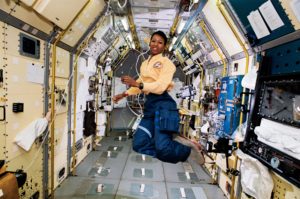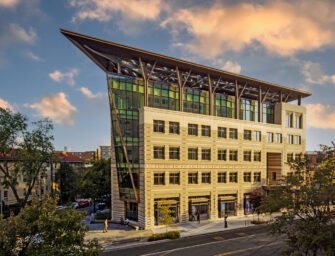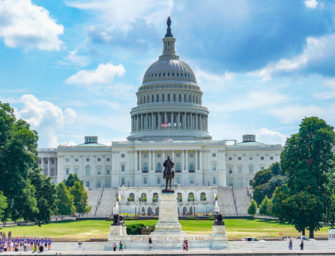Taking Radical Leaps in How We Train Early Career Scientists: A Cue from the 25-year Anniversary of Mae Jemison’s Space Journey
By Jasmine Crumsey, Ph.D., AGU Council Member, and Visiting Postdoctoral Scholar in Ecology & Evolutionary Biology at Cornell University.
“The overwhelming challenges we need to face today can’t be solved through incrementalism . . . What actually holds us back? Why aren’t we doing bigger things? The first answer is people and the perception of who has the solution.” – Dr. Mae Jemison, TEDArchive Talk: Want Interstellar Travel? Build Interdisciplinary Teams. 2016.
 Dr. Mae Jemison became the first African-American woman to travel in space when she served as a mission specialist on the space shuttle Endeavor from September 12-20, 1992. This September marks the 25th anniversary of her voyage. Prior to joining the NASA astronaut program in 1987, Jemison worked as a physician in both West Africa and here at home in California. Since leaving NASA in 1993, she has served as a professor of environmental science, the founder of two companies spearheading technological developments for daily life, and a principal of the 100 Year Starship – a joint U.S. Defense Advanced Research Projects Agency (DARPA) and NASA initiative that promotes the research, public engagement, and innovation necessary to make interstellar travel possible in the next 100 years. The anniversary of Jemison’s historic flight, her dynamic career path, and current commitment to championing the interdisciplinary collaborations needed for radical technological innovation presents an opportunity to consider how AGU might champion comparable innovation in the training of early career scientists as it celebrates its own centennial anniversary in 2019.
Dr. Mae Jemison became the first African-American woman to travel in space when she served as a mission specialist on the space shuttle Endeavor from September 12-20, 1992. This September marks the 25th anniversary of her voyage. Prior to joining the NASA astronaut program in 1987, Jemison worked as a physician in both West Africa and here at home in California. Since leaving NASA in 1993, she has served as a professor of environmental science, the founder of two companies spearheading technological developments for daily life, and a principal of the 100 Year Starship – a joint U.S. Defense Advanced Research Projects Agency (DARPA) and NASA initiative that promotes the research, public engagement, and innovation necessary to make interstellar travel possible in the next 100 years. The anniversary of Jemison’s historic flight, her dynamic career path, and current commitment to championing the interdisciplinary collaborations needed for radical technological innovation presents an opportunity to consider how AGU might champion comparable innovation in the training of early career scientists as it celebrates its own centennial anniversary in 2019.
At a time of recent celebrations surrounding a solar eclipse, mass evacuations from severe hurricanes, and mass protests against rescinded national commitments to combat climate change, the Earth and space sciences sits at the center of public discourse. In the next 100 years, it is imperative that the AGU community gives a critical eye to how we train early career scientists. These individuals will have little choice in considering and communicating the economic, political, and social implications of their work. What incentives should we have in place for advocacy and outreach? What training is needed to build confidence in sharing expertise on these issues when called? What communication skills are necessary to foster novel partnerships both across scientific disciplines and with professionals in political, private, and nonprofit sectors? Can we redesign degree programs so that core courses provide the foundational knowledge needed to operate as an expert within one’s field and elective courses provide the skills needed for graduates to operate in a Jemison-like manner; creating their own entrepreneurial and interdisciplinary opportunities that spur scientific innovation? These questions taken together outline the overwhelming challenges we face in preparing future generations of Earth and space scientists.
Addressing these questions requires consideration of four things: what this population of scientists will look like, what backgrounds they will bring to the table, how they will spend their time, and what pathways AGU will have in place to keep them engaged in the Earth and space sciences. What is exciting is that the AGU already hosts an array of initiatives and platforms that can receive and directly benefit from a diverse population of early career scientists. Seats for early career scientists in AGU governing bodies, Congressional science policy fellowships, travel grants to the Fall Meeting, the Sharing Science Network, the Thriving Earth Exchange, the Bright Students Training as Research Scientists (Bright STaRS) Program, and the Minorities Striving and Pursuing Higher Degrees of Success in Earth System Sciences (MS PHD’S) Program all represent excellent and successful programming. Still, many will agree that there is more progress to be made in increasing the diversity of who sits at the table and improving the retention of young talent across career stages. If we think of ourselves (Earth and space scientists) as currently being in flight and viewing the Earth from space, what’s next? How do we expand our capabilities, and those of the next generation of scientists, so that we can view the Earth from as far as the next galaxy?



There are no comments
Add yours